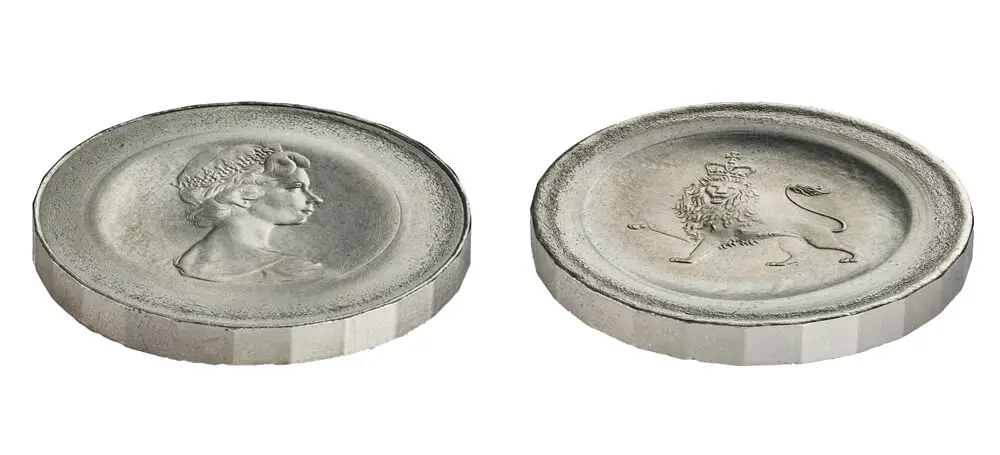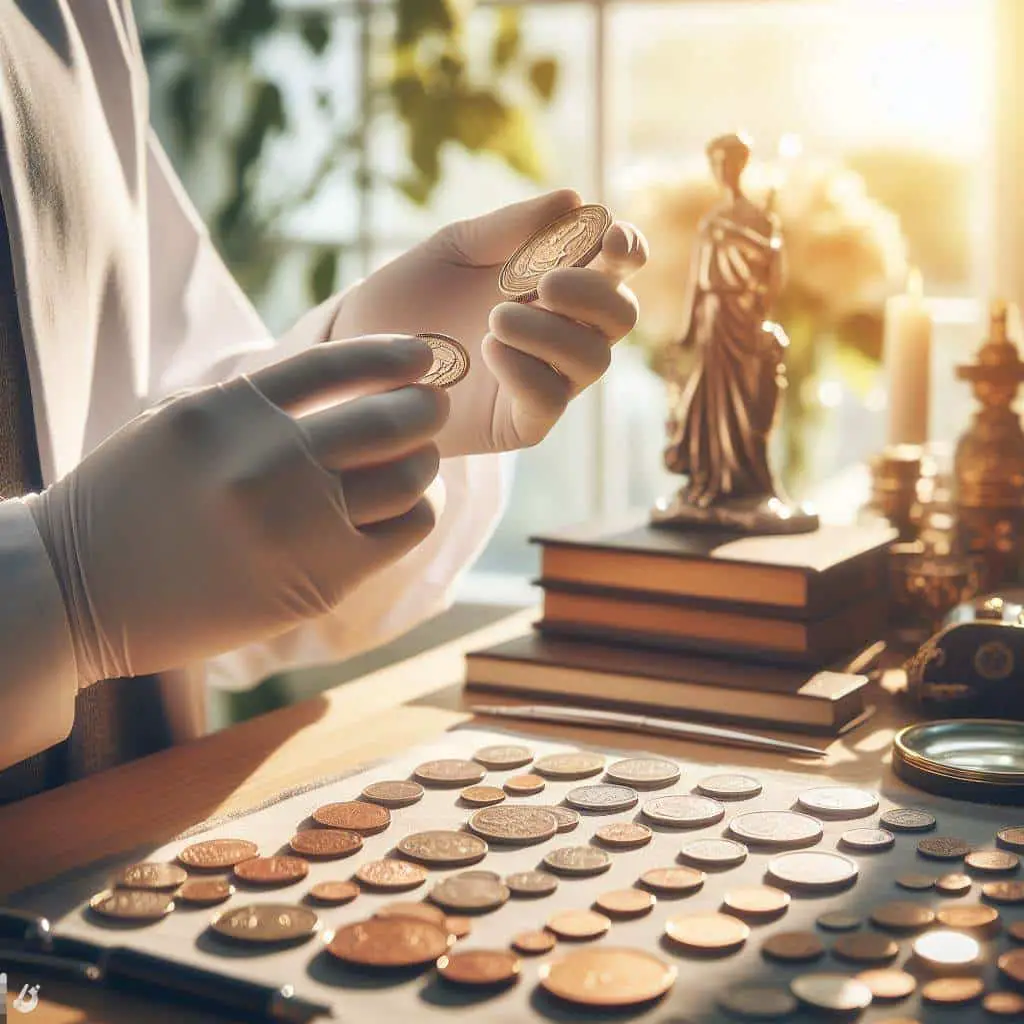What is a Die Trial Piece? Trial pieces, which are considered part of the pattern family in numismatics, strike uniface impressions using either the obverse or reverse die to test a certain design or example. Mint workers strike these trial coins from finished or unfinished dies, often using metals other than the adopted composition, such as copper, white metal, tin, lead, wax, or cardboard. Gold die trials are exceedingly rare.
Die trial pieces hold significant value for coin collectors, particularly those interested in major mint errors, off-metals, broadstrikes, uniface strikes, and coins struck on larger planchets. Throughout history, these unique creations have played a crucial role in the minting process at institutions like the Royal Mint, ensuring the quality and accuracy of the precious metals used in ancient art and modern coinage alike.
Understanding Die Trials
Die trial pieces are an essential part of the minting process, serving several crucial purposes:
- Quality Control: Die trials ensure that the final product meets The Royal Mint’s high standards of craftsmanship before mass production begins. They allow for physical inspection of the coin design, ensuring that the 2D design translates well onto the actual coin.
- Reference Point: Die trial pieces serve as a reference for the production team throughout the manufacturing process, helping maintain the expected quality of the finished product. A single die trial piece from each product and test is kept at The Royal Mint Museum for safekeeping and future reference.
- Design Refinement: Artists use die trial pieces to study their designs in physical form, allowing them to make necessary adjustments and ensure the best possible final product. These pieces also help in honing production techniques to yield high-quality, expertly finished coins.
Die trial pieces are typically uniface impressions, struck using either the obverse or reverse die. They can be created from finished or unfinished dies and are often struck in various metals, such as:
- Copper
- White metal
- Tin
- Lead
- Wax
- Cardboard
- Gold (exceedingly rare)
Each trial piece bears a special security mark or symbol and the words “ROYAL MINT TRIAL” on the obverse. Collectors highly seek these unique coins, especially those interested in off-metals, broadstrikes, uniface strikes, and coins struck on larger planchets. The Judd reference book of patterns and die trials lists U.S. die trials, facilitating collectors in identifying and cataloging them.

History and Purpose of Die Trial Pieces
Die trial pieces have been used for centuries, traditionally for testing The Royal Mint’s capability of making coins from different alloys and specifications. These rare coins, with typically between seven and 30 pieces produced for each product depending on complexity and number of trials required, serve as a crucial part of the minting process.
The Royal Mint primarily uses modern die trial pieces to test new designs, periodically conducting research and development on new coin types.
After approving the product, The Royal Mint typically destroys the majority of die trial pieces, while only cataloging a few (usually around three) for reference at The Royal Mint Museum. These cataloged pieces serve as inspiration for future products.
Die trials, which are listed in the Judd reference book of patterns and die trials, technically belong to the pattern family. However, their uniqueness and exotic nature have sparked a growing demand for them in the coin market. Notable historical examples include:
- After James Ross Snowden became Mint Director in 1853, the Mint’s output of patterns increased dramatically, with Snowden supplying rarities to well-heeled and well-connected collectors.
- During the Civil War, experiments with religious mottos accounted for many new proposals, and after the adoption of IN GOD WE TRUST in 1864-66, designs for a new nickel five-cent piece took center stage.
- Aluminum was first used in the Mint in the late 1860s, and restrikes of both regular issues and patterns came into full swing during this period.
Significance in Numismatic Collecting
Die trial pieces hold immense significance in numismatic collecting due to their rarity and the insights they provide into the minting process. These unique coins offer collectors a glimpse into the development and evolution of coin designs, as well as the opportunity to own a piece of numismatic history. The Royal Mint regularly conducts auctions featuring die trial pieces, such as the upcoming auction on February 19, 2023, which will include over 100 unique lots of royal-themed dies trial pieces from the Royal Mint’s Memorial Collection, 2022 dies trial pieces, and a selection from their commemorative coin range.
Collectors value die trial pieces for various reasons:
- Unique features: Die trial pieces often showcase experimental designs or errors, making them highly sought-after by collectors.
- Historical significance: These coins can help identify the engravers or workshops involved in coin production and assist in dating coins and establishing chronologies.
- Rarity: With only a limited number of die trial pieces produced for each product, their scarcity adds to their appeal among collectors.
- Insights into numismatics: The study of die trial pieces contributes to the broader understanding of numismatics and the history of money.
Notable collections featuring die trial pieces include:
- The Harry W. Bass, Jr. Foundation’s coin collection, which includes a U.S. Gold Type Set 1834-1933 and a section dedicated to U.S. Patterns, Experimental and Trial Pieces (6000s).
- The Royal Mint’s upcoming 2024 auction, featuring trial pieces with both King Charles III and Queen Elizabeth II.
Conclusion
Die trial pieces play a vital role in the minting process, ensuring the quality and accuracy of coin designs before mass production begins. These unique coins, often struck in various metals and featuring experimental designs, serve as valuable reference points for artists and production teams alike. Their rarity and historical significance make them highly sought-after by numismatic collectors.
As we continue to explore the fascinating world of die trial pieces, it is clear that these coins offer a window into the rich history and evolution of numismatics. The ongoing study and appreciation of these unique creations not only contributes to our understanding of the minting process but also helps preserve an important aspect of our cultural heritage for future generations.

